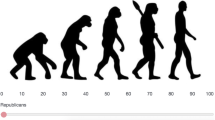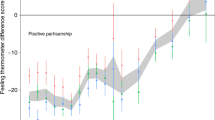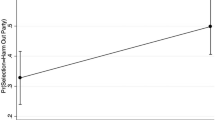Abstract
Recent, high-profile acts of partisan violence have stimulated interest among academics and the public in the etiology of support for such violence. Here, we report the results of a study that measures support for partisan violence with both abstract items (e.g., support for general partisan violence) and those focused on more specific acts (e.g., support for a partisan motivated shooting). We additionally examine intra-individual and intergroup correlates of support for partisan violence. Across three data collections (total N = 2003) and using seven unique operationalizations of support for partisan violence, we find the most consistent and typically largest relationships with individuals’ reported “need for chaos” (e.g., agreement with statements like: “Sometimes I just feel like destroying beautiful things”) and the extent to which they dehumanize members of the opposing party. System justification and social dominance orientation also consistently relate to support for partisan violence. These results suggest a common set of correlates for abstract and specific violence that reflect internal psychological (intra-individual) tendencies and intergroup evaluations. It also seems that partisan violence resembles other types of intergroup violence, as the relevant variables are not unique to the political domain.







Similar content being viewed by others
Data Availability
All data, analysis code, and study materials are available at https://osf.io/6w2de/.
Notes
Their initial item is a slight variant of this one, asking “What if [OUT-PARTY] win the 2020 presidential election? How much do you feel violence would be justified then?”.
Westwood et al. (2022) also include a non-political condition to compare partisan with non-partisan violence.
Westwood et al. (2022) also asked whether Wright should face criminal charges.
They additionally ask about protesting without a permit, and vandalism. We included these items in our study, but do not report the results given they are not clear cases of violence (Westwood et al., 2022, p. 5).
Petersen et al. (2023) link individuals’ need for chaos to their support for engaging in distinct violent acts to promote their “group’s” political rights and interests, where group is said to refer to political, religious, or social group.
There are various other ideologies that one could study. For example, Armaly et al. (2022) report a moderated correlation with the ideology of Christian nationalism (moderated by perceived victimhood, white identity, and support for the Qanon movement). Piazza (2023a) finds a relationship with populism that he defines as an ideology (p. 3). As noted, the variables considered in our studies are not exhaustive, but rather exemplars of intra-individual and intergroup correlates of support for partisan violence.
Notably, these authors do not invoke partisanship in their violence measures. Instead, they ask whether violence is an acceptable way to express disagreement and achieve important objectives.
Piazza (2023b) finds a relationship between polarization and support for political violence (and replicates it with macro-level data). However, he employs a measure that is different from the most commonly used approach in the affective polarization literature. His measure asks whether the other party is a threat to the nation’s well-being. He notes that his construct/measure may involve the mechanism of dehumanization (as well as moralization and mobilization), a construct that we treat distinctly.
Kalmoe and Mason (2022b) include an item about dehumanization as part of their moral disengagement battery.
From a pure descriptive perspective, in our data reported below, the bi-variate correlations between support for partisan violence and these variables are moderate at best (e.g., averaging around .30 and only in one case exceeding .50).
Study 1 ended up with 17 participants who identified as pure Independents (i.e., they did not lean toward one of the major parties); we exclude them from the analyses. Patterns of results remain unchanged with these participants included. Studies 2–3 samples were composed entirely of partisans or leaners.
As mentioned, we embedded attention checks in all our studies. In study 1, we included two catch items (e.g., “To ensure data quality, please select option number 3”), and excluded any respondent who failed either of these catch items from our analyses. In study 2, we included the two catch items plus an additional catch item and a short mock vignette with an attention check question that asked about facts in the vignette. We excluded respondents who failed any of these attention checks from our analyses. In study 3, we included the two catch items and any respondent who failed either of them was immediately terminated from the survey.
In their research, Kalmoe and Mason (2022b) used 4- or 5-point scales while Westwood et al. (2022) asked about support on a five-point scale and justification as a dichotomous item. Our own use of distinct scales for the Kalmoe and Mason and Westwood et al. items was largely inadvertent (the use of 100-point scales for SPV follows Mernyk et al., 2022) and should not influence the relevance of distinct correlates, which is our focus.
See SI A for question wordings and SI C (Tables SI3–SI25) for the alphas and means and standard deviations for all variables.
To re-scale items that were not measured on a 0 to 100 scale (those measured on a 0 to 100 scale did not need to be re-scaled), we subtracted one from the response (since all were on scales that started at 1) and then divided the score by the maximum number of scale points that could be moved (e.g., for a 1–7 scale, that is 6 scale points and thus, we divided the score by 6). We then multiplied this value by 100, such that the resulting score ranged from 0 to 100 and represented the percentage likelihood of supporting violence.
We operationalize need for chaos by taking the average across items (see SI A). Arceneaux et al. (2021) suggest instead creating four groups: low chaos, rebuilders, medium chaos, and high chaos. When we take that approach, our results remain consistent with what we report (the categories demonstrated substantively very large effects in the anticipated directions).
In SI C (Figures SI1–SI89), we plot (with scatterplots) the relationships between each correlate and each outcome variable, across studies. We also include the distributions of the variables in each plot.
Republicans exhibit significantly higher system justification and social dominance scores, but interactions between partisanship and each fall short of significance.
In SI C (Tables SI27–SI30), we merge data sets across all three studies, and observe notable effects of need for chaos and dehumanization among available variables.
Even more recent, Uscinski et al., (2021, p. 884) state, “Studies about support for political violence in the United States are few and far between…”.
As noted, Piazza (2023b) reports a relationship with polarization but uses a distinct operationalization that may envelope dehumanization (which contrasts with typical measures of polarization that focus on dislike).
In each study, need for chaos and dehumanization are significantly correlated, respectively, at .25, .39, and .23. These modest, but non-trivial, relationships suggest there may be a subgroup of particular relevance. Additionally, in additional analyses, we created quartile bins for need for chaos, dehumanization, system justification, and social dominance. We then replaced the continuous measures of these variables with the quartile bins and re-ran the regression analyses described in the main text. We find that, in nearly every case, the correlations are isolated to the top or top two quartiles. This suggests an acute focus on those above the median on these variables. The full results of these regression models are reported in SI C (Tables SI31–SI42).
References
Ahmed, A. (2023). Is the American public really turning away from democracy? Perspectives on Politics, 21(3), 967–978. https://doi.org/10.1017/s1537592722001062
Allen, J. J., & Anderson, C. A. (2017). Aggression and violence. In P. Sturmey (Ed.), The Wiley handbook of violence and aggression (pp. 1–14). Hoboken: Wiley.
Altemeyer, B. (1988). Enemies of freedom. Choice Reviews, 26(7), 26–39. https://doi.org/10.5860/choice.26-3934
Anderson, C. A., & Bushman, B. J. (2002). Human aggression. Annual Review of Psychology, 53(1), 27–51. https://doi.org/10.1146/annurev.psych.53.100901.135231
Arceneaux, K., Gravelle, T. B., Osmundsen, M., Petersen, M. B., Reifler, J., & Scotto, T. J. (2021). Some people just want to watch the world burn. Philosophical Transactions of the Royal Society B, 376(1822), 20200147. https://doi.org/10.1098/rstb.2020.0147
Armaly, M. T., Buckley, D. T., & Enders, A. M. (2022). Christian nationalism and political violence. Political Behavior, 44(2), 937–960. https://doi.org/10.1007/s11109-021-09758-y
Armaly, M. T., & Enders, A. M. (2022). Who supports political violence? Perspectives on Politics. https://doi.org/10.1017/S1537592722001086
Bandura, A. (1999). Moral disengagement in the perpetration of inhumanities. Personality and Social Psychology Review, 3(3), 193–209. https://doi.org/10.1207/s15327957pspr0303_3
Baum, M. A., Druckman, J. N., Simonson, M. D., Lin, J., & Perlis, R. H. (2023). The political consequences of depression. American Journal of Political Science. https://doi.org/10.1111/ajps.12827
Brandt, M. J., & Crawford, J. T. (2020). Worldview conflict and prejudice. Advances in Experimental Social Psychology, 61, 1–66. https://doi.org/10.1016/bs.aesp.2019.09.002
Broockman, D. E., Kalla, J., & Westwood, S. J. (2023). Does affective polarization undermine democratic norms or accountability? American Journal of Political Science, 67(3), 808–828. https://doi.org/10.1111/ajps.12719
Cassese, E. C. (2021). Partisan dehumanization in American politics. Political Behavior, 43(1), 29–50. https://doi.org/10.1007/s11109-019-09545-w
Cikara, M. (2015). Intergroup schadenfreude. Current Opinion in Behavioral Sciences, 3, 12–17.
Clayton, K., Davis, N. T., Nyhan, B., Porter, E., Ryan, T. J., & Wood, T. J. (2021). Elite rhetoric can undermine democratic norms. Proceedings of the National Academy of Sciences of the United States of America, 118(23), e2024125118. https://doi.org/10.1073/pnas.2024125118
Druckman, J. N. (2023). How to study democratic backsliding. Political Psychology, 67(3), 808–828. https://doi.org/10.1111/pops.12942
Druckman, J. N., Klar, S., Krupnikov, Y., Levendusky, M., & Ryan, J. B. (2024). Partisan hostility and American democracy. University of Chicago Press.
Druckman, J. N., & Shafranek, R. M. (2020). The intersection of racial and partisan discrimination. The Journal of Politics, 82(4), 1602–1606. https://doi.org/10.1086/708776
Finkel, E. J., Bail, C. A., Cikara, M., Ditto, P. H., Iyengar, S., Klar, S., Mason, L., et al. (2020). Political Sectarianism in America. Science, 370(6516), 533–536. https://doi.org/10.1126/science.abe1715
Giner-Sorolla, R., Burgmer, P., & Demir, N. (2021). Commentary on over (2021). Perspectives on Psychological Science, 16(1), 24–27. https://doi.org/10.1177/1745691620953788
Gøtzsche-Astrup, O., Van den Bos, K., & Hogg, M. A. (2020). Radicalization and violent extremism. Group Processes & Intergroup Relations, 23(8), 1127–1136. https://doi.org/10.1177/1368430220970319
Haslam, N. (2006). Dehumanization. Personality and Social Psychology Review, 10(3), 252–264. https://doi.org/10.1207/s15327957pspr1003_4
Hauser, D., Moss, A. J., Rosenzweig, C., Jaffe, S. N., Robinson, J., & Litman, L. (2022). Evaluating CloudResearch’s approved group as a solution for problematic data quality on MTurk. Behavior Research Methods, 54(11), 1–12. https://doi.org/10.3758/s13428-022-01999-x
Henry, P., Sidanius, J., Levin, S., & Pratto, F. (2005). Social dominance orientation, authoritarianism, and support for intergroup violence between the Middle East and America. Political Psychology, 26(4), 569–584. https://doi.org/10.1111/j.1467-9221.2005.00432.x
Huddy, L., Mason, L., & Aarøe, L. (2015). Expressive partisanship. American Political Science Review, 109(1), 1–17. https://doi.org/10.1017/s0003055414000604
Iyengar, S., & Westwood, S. J. (2015). Fear and loathing across party lines. American Journal of Political Science, 59(3), 690–707.
Jardina, A., & Piston, S. (2023a). The politics of racist dehumanization in the United States. Annual Review of Political Science, 26, 369–388. https://doi.org/10.1146/annurev-polisci-062321-041446
Jardina, A., & Piston, S. (2023b). Trickle-down racism. Current Research in Ecological and Social Psychology, 5, 100158. https://doi.org/10.1016/j.cresp.2023.100158
Jost, J. T. (2020). A theory of system justification. Harvard University Press.
Jost, J. T. (2021). Left and right. Oxford University Press.
Jost, J. T., & Kay, A. C. (2005). Exposure to benevolent sexism and complementary gender stereotypes. Journal of Personality and Social Psychology, 88(3), 498–509. https://doi.org/10.1037/0022-3514.88.3.498
Kalmoe, N. P. (2020). With ballots and bullets. University of Chicago Press.
Kalmoe, N. P., & Mason, L. (2022a). A holistic view of conditional American support for political violence. Proceedings of the National Academy of Sciences of the United States of America, 119(32), e2207237119. https://doi.org/10.1073/pnas.2207237119
Kalmoe, N. P., & Mason, L. (2022b). Radical American partisanship. University of Chicago Press.
Kelman, H. G. (1973). Violence without moral restraint. Journal of Social Issues, 29(4), 25–61.
Kteily, N., & Landry, A. P. (2022). Dehumanization. Trends in Cognitive Sciences, 26(3), 222–240. https://doi.org/10.1016/j.tics.2021.12.003
Landry, A. P., Fincher, K., Barr, N., Brosowsky, N. P., Protzko, J., Ariely, D., & Seli, P. (2024). Harnessing dehumanization theory, modern media, and an intervention tournament to reduce support for retributive war crimes. Journal of Experimental Social Psychology, 111, 104567. https://doi.org/10.1016/j.jesp.2023.104567
Landry, A. P., Ihm, E., Kwit, S., & Schooler, J. W. (2021). Metadehumanization erodes democratic norms during the 2020 presidential election. Analyses of Social Issues and Public Policy, 21(1), 51–63. https://doi.org/10.1111/asap.12253
Landry, A. P., Orr, R. I., & Mere, K. (2022). Dehumanization and mass violence. PLoS ONE, 17(11), e0274957. https://doi.org/10.1371/journal.pone.0274957
Landry, A. P., Schooler, J. W., Willer, R., & Seli, P. (2023). Reducing explicit blatant dehumanization by correcting exaggerated metaperceptions. Social Psychological and Personality Science, 14(4), 407–418. https://doi.org/10.1177/19485506221099146
Lelkes, Y., & Westwood, S. J. (2017). The limits of partisan prejudice. The Journal of Politics, 79(2), 485–501. https://doi.org/10.1086/688223
Luft, A. (2023). The moral career of the genocide perpetrator. Sociological Theory, 41(4), 324–351. https://doi.org/10.1177/07352751231203716
Martherus, J., Martinez, A. G., Piff, P. K., & Theodoridis, A. G. (2021). Party animals? Political Behavior, 43(2), 517–540. https://doi.org/10.1007/s11109-019-09559-4
Mernyk, J. S., Pink, S., Druckman, J. N., & Willer, R. (2022). Correcting inaccurate metaperceptions reduces Americans’ support for partisan violence. Proceedings of the National Academy of Sciences of the United States of America, 119(16), e2116851119. https://doi.org/10.1073/pnas.2116851119
Moore-Berg, S. L., Ankori-Karlinsky, L. O., Hameiri, B., & Bruneau, E. (2020). Exaggerated meta-perceptions predict intergroup hostility between American political partisans. Proceedings of the National Academy of Sciences, 117(26), 14864–14872. https://doi.org/10.1073/pnas.2001263117
Nazzaro, M. (2023). 83 percent in new poll concerned about violence. The Hill.
Opotow, S. (1990). Moral exclusion and injustice. Journal of Social Issues, 46(1), 1–20. https://doi.org/10.1111/j.1540-4560.1990.tb00268.x
Peirce, C. S. (1877). The fixation of belief. Popular Science Monthly.
Petersen, M. B., Osmundsen, M., & Arceneaux, K. (2023). The ‘Need for Chaos’ and motivations to share hostile political rumors. American Political Science Review, 117(4), 1486–1505. https://doi.org/10.1017/s0003055422001447
Piazza, J. A. (2023a). Populism and support for political violence in the United States. Political Research Quarterly, 77(1), 152–166. https://doi.org/10.1177/10659129231198248
Piazza, J. A. (2023b). Political polarization and political violence. Security Studies, 32(3), 476–504. https://doi.org/10.1080/09636412.2023.2225780
Sidanius, J., & Pratto, F. (1999). Social dominance. Cambridge University Press.
Sullivan, J. L., & Transue, J. E. (1999). The psychological underpinnings of democracy. Annual Review of Psychology, 50(1), 625–650. https://doi.org/10.1146/annurev.psych.50.1.625
Uscinski, J. E., Enders, A. M., Seelig, M. I., Klofstad, C. A., Funchion, J., Everett, C., Wuchty, S., Premaratne, K., & Murthi, M. N. (2021). American politics in two dimensions. American Journal of Political Science, 65(4), 877–895. https://doi.org/10.1111/ajps.12616
Vaes, J., Paladino, M. P., & Haslam, N. (2021). Seven clarifications on the psychology of dehumanization. Perspectives on Psychological Science, 16(1), 28–32. https://doi.org/10.1177/1745691620953767
Voelkel, J. G., Chu, J. C. H., Stagnaro, M. N., Mernyk, J. S., Redekopp, C., Pink, S., Druckman, J. N., Rand, D. G., & Willer, R. (2023). Interventions reducing affective polarization do not necessarily improve anti-democratic attitudes. Nature Human Behaviour, 7, 55–64.
Walter, B. F. (2022). How civil wars start. Penguin.
Webber, D. J., Kruglanski, A. W., Molinario, E., & Jaśko, K. (2020). Ideologies that justify political violence. Current Opinion in Behavioral Sciences, 34, 107–111. https://doi.org/10.1016/j.cobeha.2020.01.004
Weingast, B. R. (1997). The political foundations of democracy and the rule of the law. American Political Science Review, 91(2), 245–263. https://doi.org/10.2307/2952354
Westwood, S. J., Grimmer, J., Tyler, M., & Nall, C. (2022). Current research overstates American support for political violence. Proceedings of the National Academy of Sciences of the United States of America, 119(12), e2116870119. https://doi.org/10.1073/pnas.2116870119
Acknowledgements
We thank Isaias Ghezae for his invaluable help with the paper’s figures.
Funding
The study was funded by Northwestern University and Stanford University.
Author information
Authors and Affiliations
Corresponding author
Ethics declarations
Competing interests
The authors have no competing interests to declare.
Ethical Approval
The study was deemed exempt by the Stanford University Institutional Review Board and performed in accordance with the American Political Science Association’s ethical standards.
Informed Consent
All study participants gave informed consent.
Additional information
Publisher's Note
Springer Nature remains neutral with regard to jurisdictional claims in published maps and institutional affiliations.
Supplementary Information
Below is the link to the electronic supplementary material.
Rights and permissions
Springer Nature or its licensor (e.g. a society or other partner) holds exclusive rights to this article under a publishing agreement with the author(s) or other rightsholder(s); author self-archiving of the accepted manuscript version of this article is solely governed by the terms of such publishing agreement and applicable law.
About this article
Cite this article
Landry, A.P., Druckman, J.N. & Willer, R. Need for Chaos and Dehumanization are Robustly Associated with Support for Partisan Violence, While Political Measures are Not. Polit Behav (2024). https://doi.org/10.1007/s11109-024-09934-w
Accepted:
Published:
DOI: https://doi.org/10.1007/s11109-024-09934-w




